Travellers to and from Sydney Airport should enjoy a faster run from road upgrades announced over the weekend by the NSW Government and Sydney Airport Corporation.
As part of a joint works package estimated at almost $500m, the state government says it will widen Joyce Drive and General Holmes Drive (between O’Riordan Street and Mill Pond Road) to three lanes in each direction, while also widening Marsh Street.
The level railway crossing for the Port Botany freight line at General Holmes Drive will be replaced by a road underpass linking General Holmes Drive, Botany Road and Wentworth Avenue.
The plan also promises "improvements to the Mill Pond Road intersections with General Holmes Drive and Botany Road to support future growth and access to the airport."
Stretches of Robey Street and O’Riordan Street will be converted into one-way northbound and southbound, respectively.
For its part, Sydney Airport will build a "ground transport interchange" and add a new airport hotel close to the domestic T2/T3 terminals.
The transport interchange will include a public and private bus and coach facility at ground level, parking for up to 5,500 cars plus a "quick turnaround facility" for rental cars.
The works will be integrated into the previously announced five lane T2/T3 ring road due for completion by the end of next year.
Here's what the approach into T2 and T3 currently looks like.
And here's how it will take function as Sydney Airport's touted 'congestion buster' to break the traffic chokehold.
“With 74 million passengers a year forecast by 2033, we're building the road and public transport capacity now to support continued tourism and travel growth" said Sydney Airport CEO Kerrie Mather.
Click here to visit the download page for the Sydney Airport T2/T3 Ground Access Solutions and Hotel Preliminary Draft Major Development Plan.
Follow Australian Business Traveller on Twitter: we're @AusBT
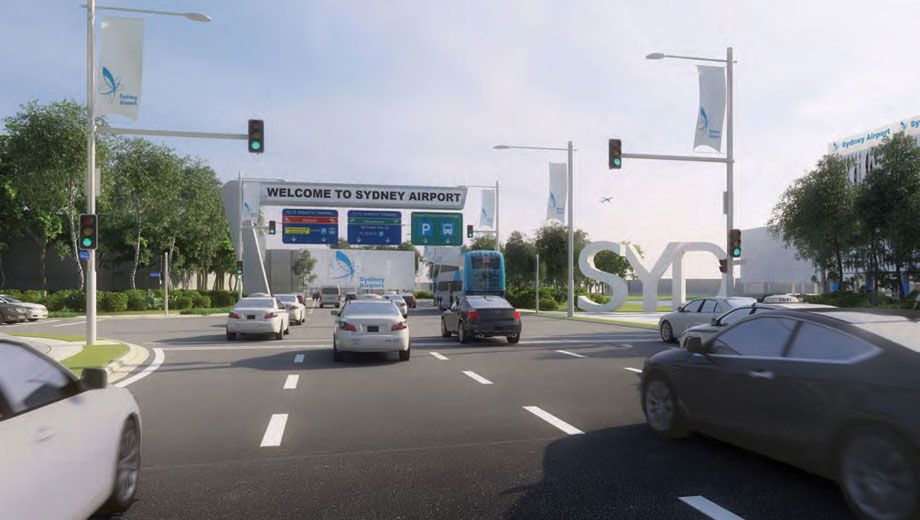

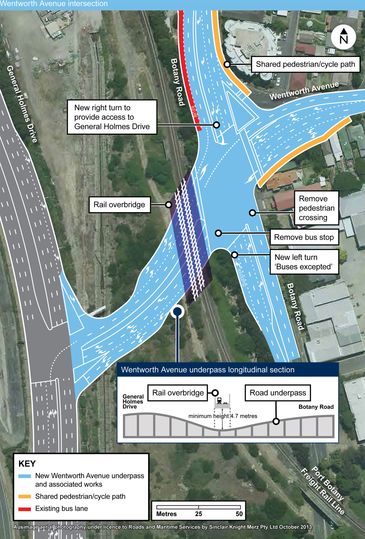
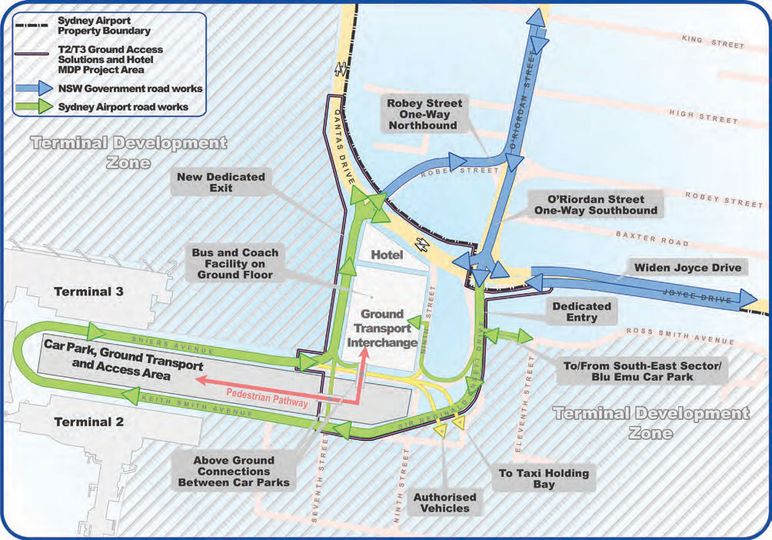
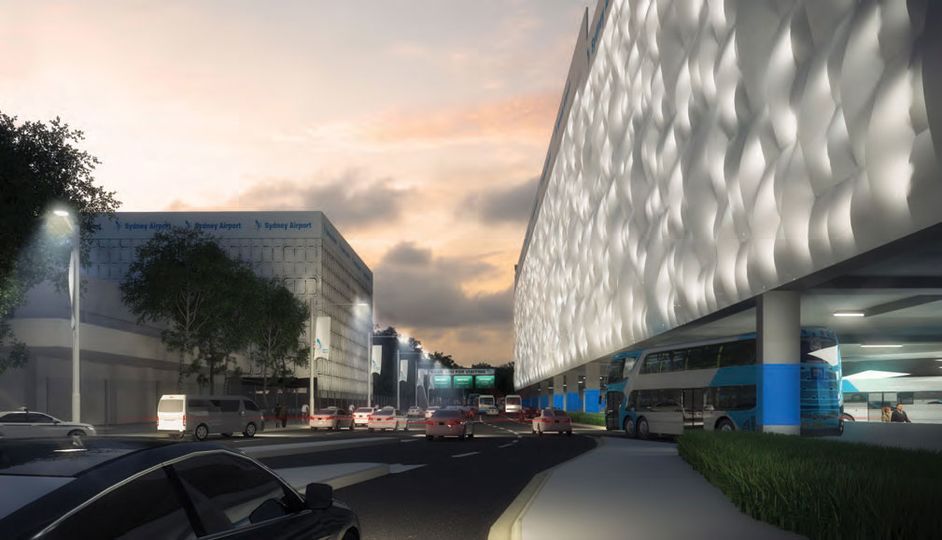
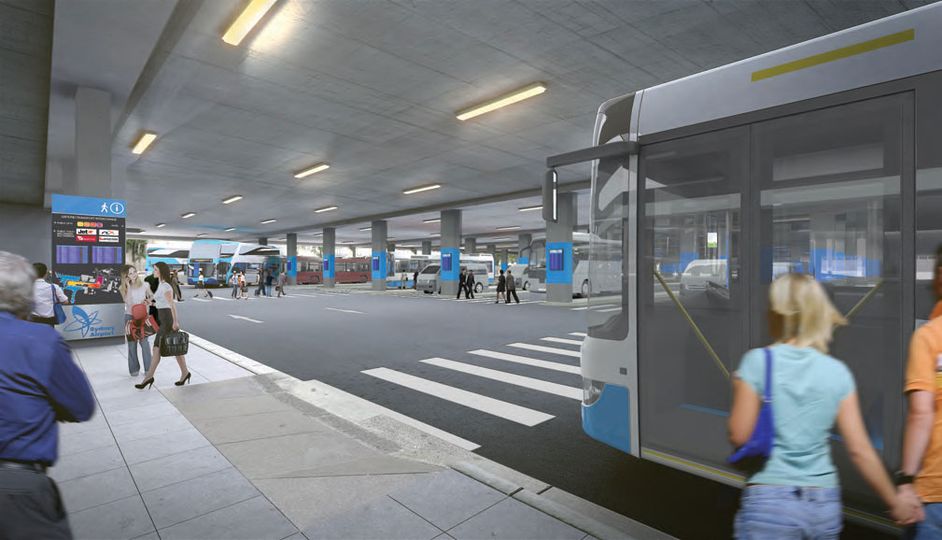
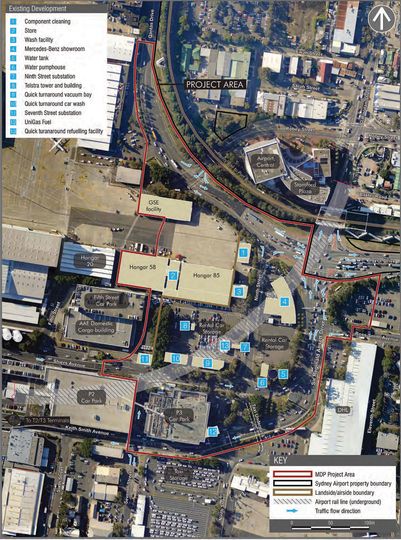
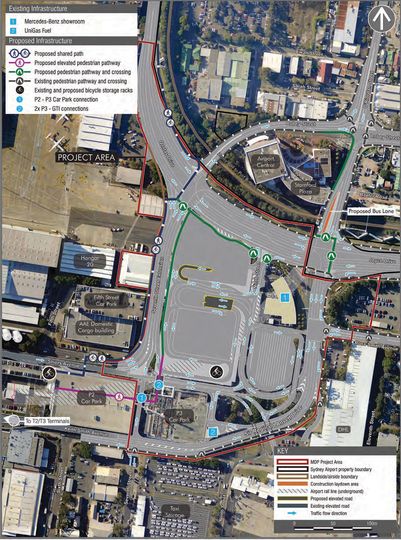

Virgin Australia - Velocity Rewards
24 Aug 2011
Total posts 780
Counterpoint - why not just have the NSW Govt. pay the levy for the Aiport Train and put $200m into improving the rolling stock?
28 Oct 2011
Total posts 645
that's way too sensible..lol... but i do welcome the improvements to the road flow around the airport precinct (it's long overdue), and domestic 'business' travellers are very car/taxi-centric...the 'airport train' is a great cash cow for the govt as it's frequently used by 'leisure' travellers (especially)from overseas,who have multiple huge bags/backpacks, as it's more convenient, as 1 taxi (sedan)cant take 2-4 pax AND all that baggage
Qantas - Qantas Frequent Flyer
17 Aug 2012
Total posts 2199
Because the NSW Govt makes money from AirportLink, as it's in a profit-sharing agreement with them, so they have no reason to reduce the fare. They can just let the surcharge sit, though, and only increase the base fare in line with standard annual increases.
The other reason is that the rolling stock used on the Airport Line comes from Flemington and Auburn depots, and is basically part of the big pool of trains used to run the vast Sydney Trains network. Worse still, the newest trains are actually very poorly-suited to the AirportLink stations as the guard is at the back of the train, not the middle anymore (which is where all the action is on all AirportLink stations).
What I want to see is a revival of the State Transit airport bus.
Virgin Australia - Velocity Rewards
04 Mar 2014
Total posts 10
How will reconfiguring the roads around the edges of the airport ease conjestion? It is the actual approaches to the road leading directly to the airport that is the huge problem.
The changes (from what i can make out from the pictures) will only cause more confusion, and perhaps do little in the long run to ease conjestion.
Make Train travel and bus travel more affordable to the airport, and remove cars will be the only way to ease the conjestion problems.
Qantas - Qantas Frequent Flyer
17 Aug 2012
Total posts 2199
If you look carefully at one of the photos, you'll see a Bustech CDi double-deck bus.
Buses to the airport are affordable enough - the problem is the lack of service!
Velocity
19 Jun 2013
Total posts 66
Indeed. I doubt it wil do anything or much to help, as from my observation, the largest part of the problem is the congestion inside the airport itself, impacting on what happens on nearby roads.
That internal congestion has several sources: the design of the upper & lower roadways and their merging points; the ridiculous boom gates that let both: cars into the tiny free pax pickup zone, and taxis into the rank & holding areas ; likewise the small size, design of and boom gates to the holding areas for the car park & private shuttles.
Some of the above are pure design issues, and others exist to increase revenue at the expense of utility.
The only solutions would be to 1) take it all down & design/build the internal roadway system again from scratch, 2) forego some revenue in favour of speeding up the traffic flows. That isn't going to happen, right? So meantime, allow taxis to pickup waiting pax - on either level - immediately they drop others off outside the check-in, without having to re-join the queue (and for the carbon-footprint believers, this would also save fuel & lower air pollution).
Qantas - Qantas Frequent Flyer
17 Aug 2012
Total posts 2199
I think one benefit of the new 'ground transport interchange' (a fancy term for what will essentially be a bus terminal) is that it doesn't force the buses to run the full loop around the car park like the current route of the 400 does, which takes forever due to the arrivals level congestion at T2.
Velocity
19 Jun 2013
Total posts 66
Just a word about the train service... to be sure, it isn't Narita, Frankfurt or Zurich. But what infrastructure in this country is??
As the owner of an SME, all my travel costs come off my own bottom line hence out of my own pocket. That being the case, depending on how many calendar days I will be away, the train service to my home station is a) usually cheaper than Park & Fly, b) faster than driving esp. if I have a departure time of between 07:30 and 09:30, as in my car, I have to take my chances with ALL of the Warringah Freeway, Harbour Tunnel, The Ed and finally S.Cross Drv. giving good runs, in order to be sure of making my flight. Those of you who drive in from the north will know that the odds of ALL of those routes being OK on any given morning, are close to zero.
The only REALLY moronic aspect of the design of the train line - which serves to let you know that you are in Sydney, and in NSW - is that the airport stations are just 2 stops out of many, near the end of a normal commuter line from the southern suburbs. Which means that particularly for arriving international pax, the trains pulling into International station right on time for the bulk of internat'nl arivals, will be packed full of peak-hour commuters, and there will barely be any space for the boarding pax, let alone their luggage.
The airport stations should have been a seperate spur line before re-joining the main line, so that the trains were empty at International to begin with, very much like how the train line was built for Brisbane Airport.
Qantas - Qantas Frequent Flyer
17 Aug 2012
Total posts 2199
It would be a separate spur if trains from Campbelltown via East Hills followed the old route via Sydenham (as it is, only limited services do this in peak).
It was a through-routed line because the railway was agitating for reduced train traffic between Sydenham and Redfern.
Velocity
19 Jun 2013
Total posts 66
Right. Which just proves my point about the typically moronic level of Sydney/NSW infrastructure planning.
If you are going to build a train service to the airport, then do so with the airport and its needs as the primary focus, not as an afterthought in solving totally unrelated problems elsewhere.
Qantas - Qantas Frequent Flyer
17 Aug 2012
Total posts 2199
Dare I suggest the idea was to kill two birds with one stone.
I rather think you and I would agree they have merely killed themselves with the stone.
I used it today.
Hi Guest, join in the discussion on Sydney Airport promises to cut traffic congestion